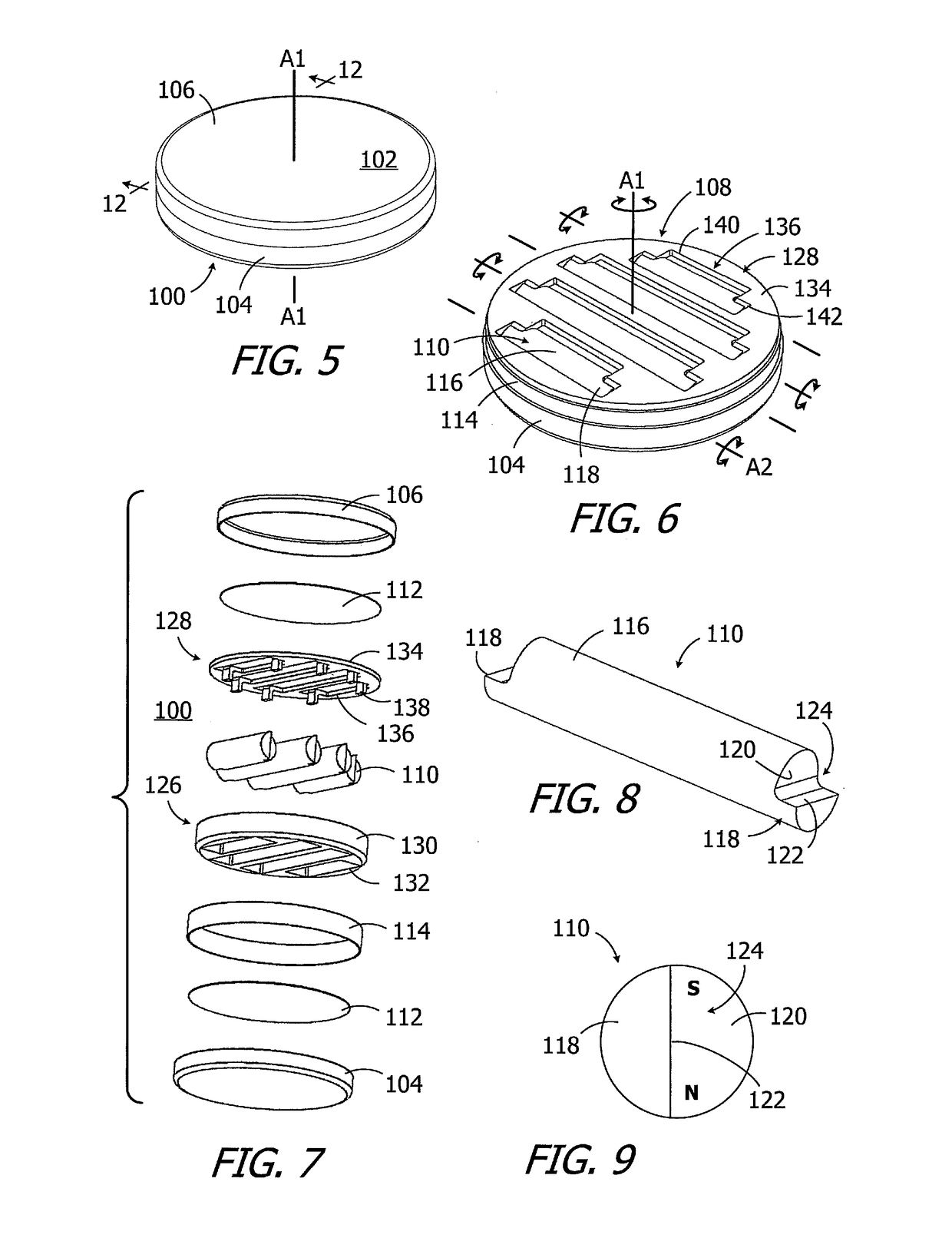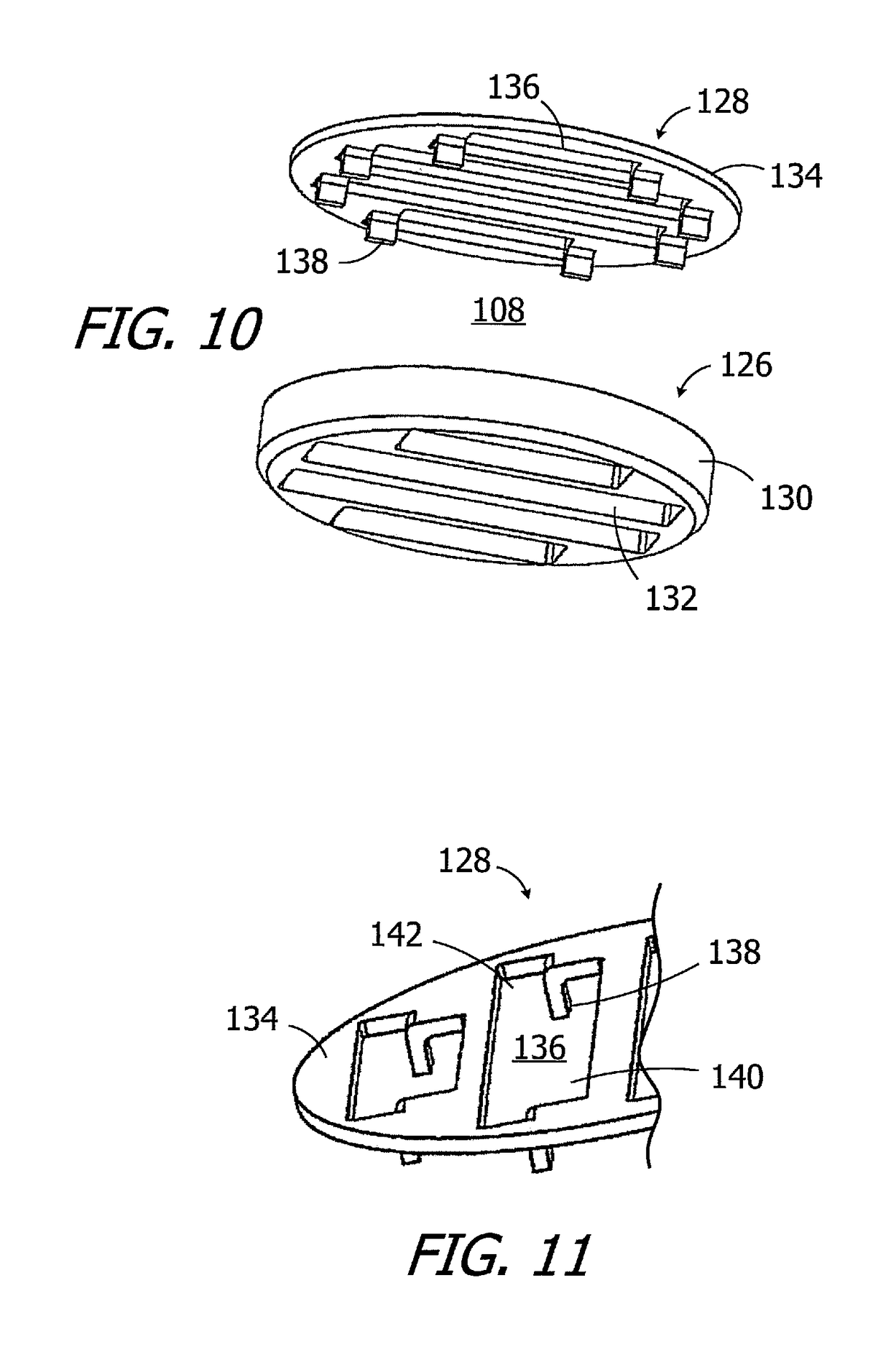Cochlear implants having mri-compatible magnet apparatus and associated methods
a cochlear implant and magnet apparatus technology, applied in the field of implantable cochlear implantable cochlear stimulation (or “ ics”) systems, can solve the problems of inconvenient headpiece mounting, inability to properly mount the headpiece to the patient's head, and undesirable increase in the size and weight of the headpi
- Summary
- Abstract
- Description
- Claims
- Application Information
AI Technical Summary
Benefits of technology
Problems solved by technology
Method used
Image
Examples
Embodiment Construction
[0043]The following is a detailed description of the best presently known modes of carrying out the inventions. This description is not to be taken in a limiting sense, but is made merely for the purpose of illustrating the general principles of the inventions.
[0044]As illustrated for example in FIGS. 5-9, an exemplary magnet apparatus 100 includes a case 102, with base 104 and a cover 106, a magnet frame 108, and a plurality of elongate diametrically magnetized magnets 110 within the frame that define a N-S direction. The exemplary case 102 is disk-shaped and defines a central axis A1, which is also the central axis of the magnet frame 108. The magnet frame 108 is freely rotatable relative to the case 102 about the central axis A1 over 360°. The magnets 110 rotate with the magnet frame 108 about the central axis A1. Each magnet 110 is also rotatable relative to the magnet frame 108 about its own longitudinal axis A2, with the frame limiting rotation to less than 360° in the manner ...
PUM
 Login to View More
Login to View More Abstract
Description
Claims
Application Information
 Login to View More
Login to View More - R&D
- Intellectual Property
- Life Sciences
- Materials
- Tech Scout
- Unparalleled Data Quality
- Higher Quality Content
- 60% Fewer Hallucinations
Browse by: Latest US Patents, China's latest patents, Technical Efficacy Thesaurus, Application Domain, Technology Topic, Popular Technical Reports.
© 2025 PatSnap. All rights reserved.Legal|Privacy policy|Modern Slavery Act Transparency Statement|Sitemap|About US| Contact US: help@patsnap.com



